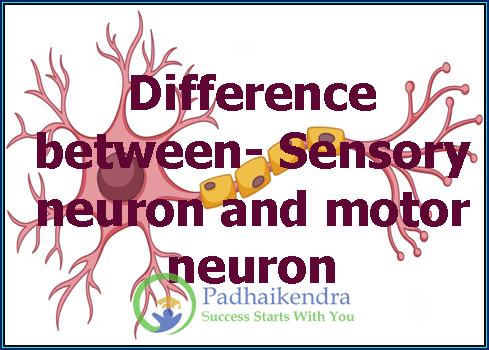Sensory neurons and motor neurons are both types of neurons that are responsible for transmitting information within the nervous system, but they have different functions.
Sensory neurons, also known as afferent neurons, are responsible for transmitting sensory information from sensory receptors, such as in the skin, eyes, ears, and other organs, to the central nervous system (brain and spinal cord). Sensory neurons detect and respond to stimuli, such as light, sound, temperature, pressure, and pain, and send signals to the brain to be interpreted as sensations or perceptions. For example, when you touch a hot stove, sensory neurons in your skin send a signal to your brain, which then interprets the sensation as pain and triggers a reflex action to pull your hand away.
Motor neurons, also known as efferent neurons, are responsible for transmitting signals from the central nervous system to the muscles and glands in the body, to produce movement or secretion of hormones or other substances. Motor neurons are involved in the control of voluntary movements, such as walking, reaching, and talking, as well as involuntary movements, such as heartbeat and digestion. For example, when you want to pick up a cup of coffee, motor neurons in your brain send a signal to the muscles in your arm and hand to contract and lift the cup.
In summary, sensory neurons are responsible for sensing and transmitting sensory information from the environment to the central nervous system, while motor neurons are responsible for transmitting signals from the central nervous system to the muscles and glands in the body to produce movement or secretion of substances.





